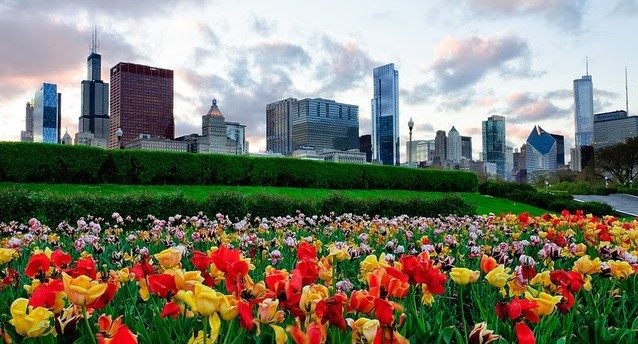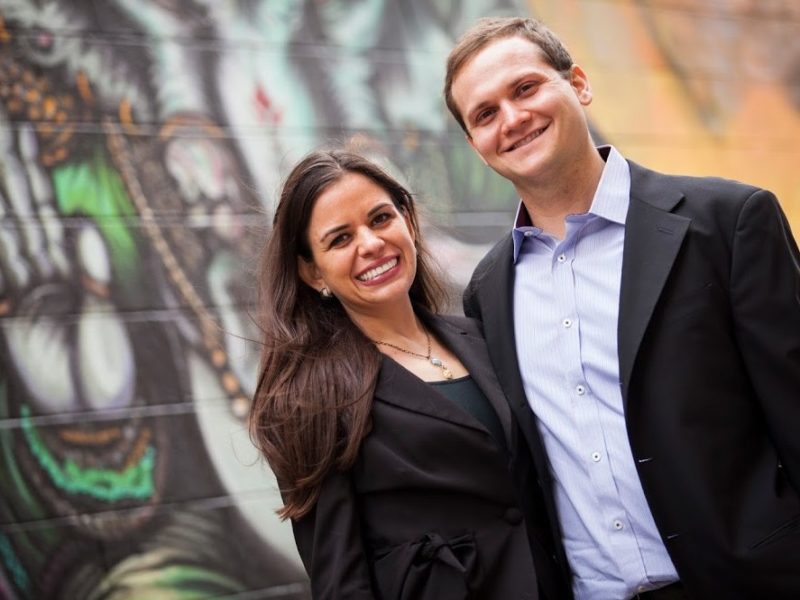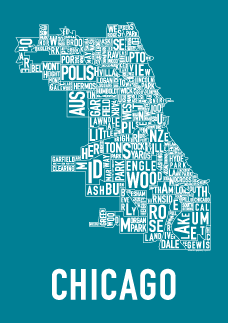
Chicago in…Maps
Since Apple fine-tuned its GPS system and stopped (for the most part) sending people into lakes, no one really relies on paper maps anymore. But we’ve compiled a few maps in this month’s “Chicago in…Maps” that may change the way you get around the city. Why listen to Siri when you can instead hop on the CTA and take a tour that goes from the site of the World’s Fair to the Valentine’s Day Massacre? And if you didn’t catch our inaugural post in the “Chicago In…” series, you can find it here.
Chicago’s 77 neighborhoods, or “community areas,” were established in the 1920s by faculty at the University of Chicago (CA #41 Hyde Park). Their community areas didn’t include all of the neighborhoods we recognized today. West Town, for example, encompasses Wicker Park and Ukrainian Village, among others. But it does provide a framework for looking at the city that is useful even today—not to mention a snazzy print to frame and hang in your own living room.
One of our most distinctive features, the Chicago “L” runs above ground—well, most of the time. The Pink Line, the L’s most recent addition, was named through a contest for CPS students. So if a new CTA line is ever added to Chicago’s South Side, we’re going have to get creative.
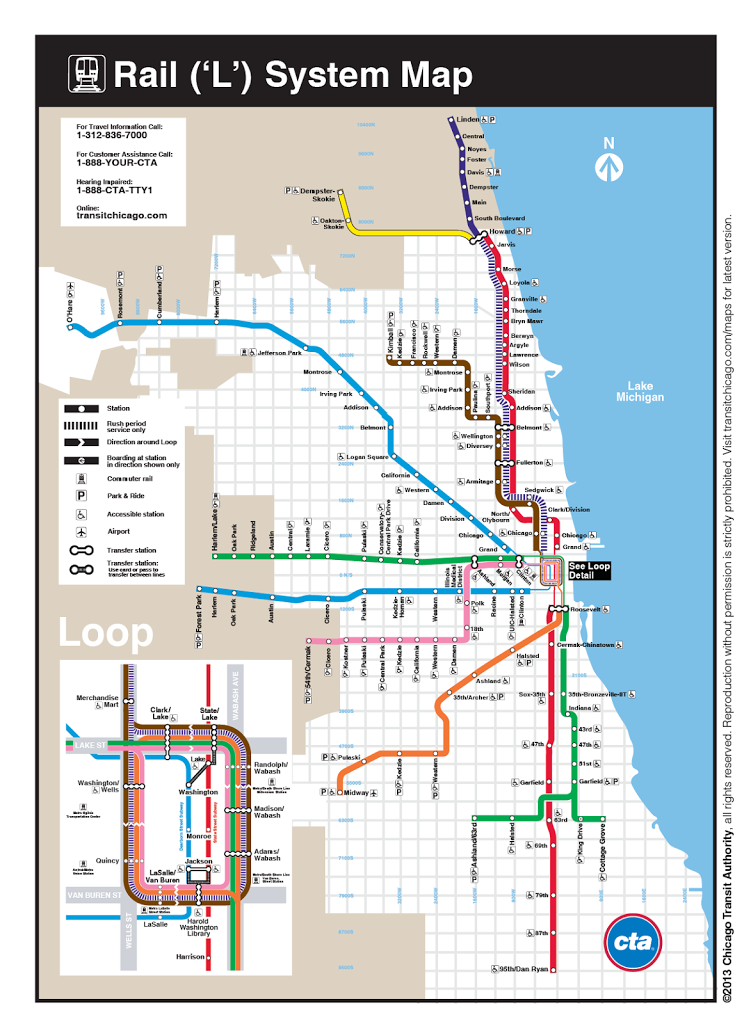 |
| Source: CTA. |
Chicago’s waterways are half-natural, half-manmade. In 1900, Chicago engineers reversed the course of the Chicago River so that the sewage it carried would no longer go into Lake Michigan. Today, you can go river rafting down the Chicago River, see the Chicago skyline from a boat tour and, thanks to a bit of Chicago ingenuity, drink clean water from Lake Michigan.
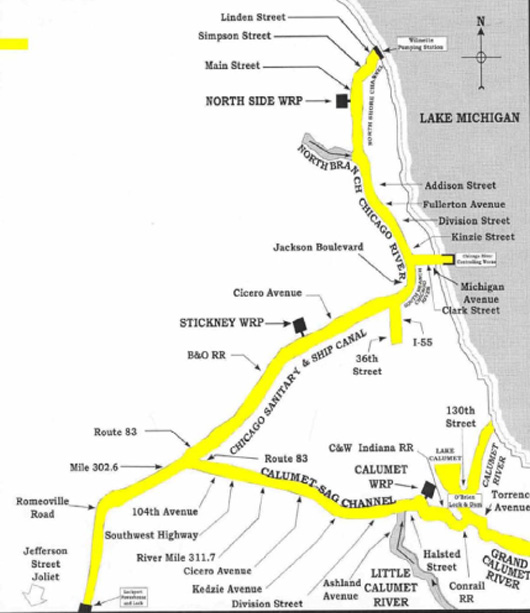 |
| Source: Medill Reports. |
The Water Tower was one of the few buildings that survived the Great Chicago Fire. Little else did, forcing Chicago to rebuild and rethink its approach to urban construction. The Great Chicago Fire is why all Chicago apartments have two exits and why we now have alleyways. It’s also a pretty great sports team, to boot.
 |
| Source: University of Chicago Libraries. |
How does Chicago bounce back after a fire? In the grandest way possible. In 1893, Chicago transformed itself into “The White City” and impressed at the World’s Fair with the first Ferris Wheel and a quest for the world’s best beer. While the Ferris Wheel continues to impress at Navy Pier, Chicagoans may now debate whether Pabst’s deserved that Blue Ribbon after all.
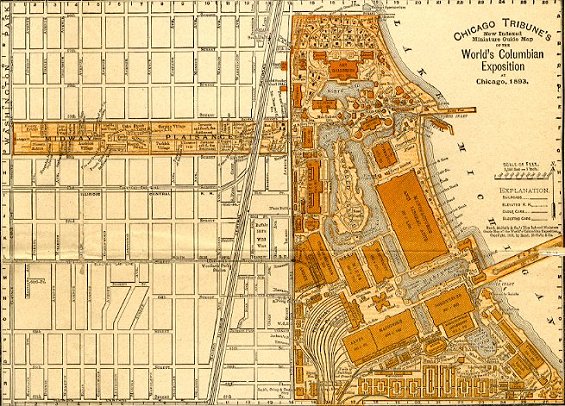 |
| Source: haygeneology.com |
The World’s Columbian Exposition was held on the Chicago Midway on the South Side, not far from former Mayor Daley’s plans for the 2016 Summer Olympics bid. We ultimately lost out to Brazil, but we’d like to think that we haven’t yet given up on those plans to revitalize the South Side.
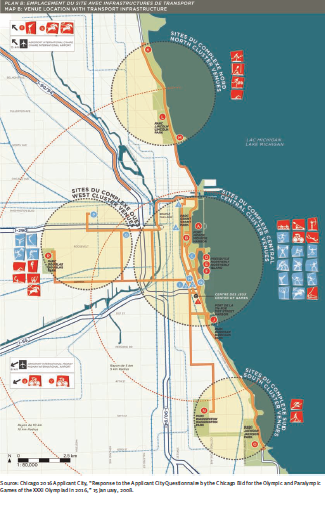 |
| Source: Chicago 2016 Olympic Report. |
We hate to end with some of Chicago’s darker history, but the Chicago Outfit, Al Capone, John Dillinger—we had them all. And while we’re certainly not proud of it, it’s not an easy part of our history to brush under the rug. Here’s hoping that we continue to ask #WhatIfChicago and put this type of violence in our past once and for all.
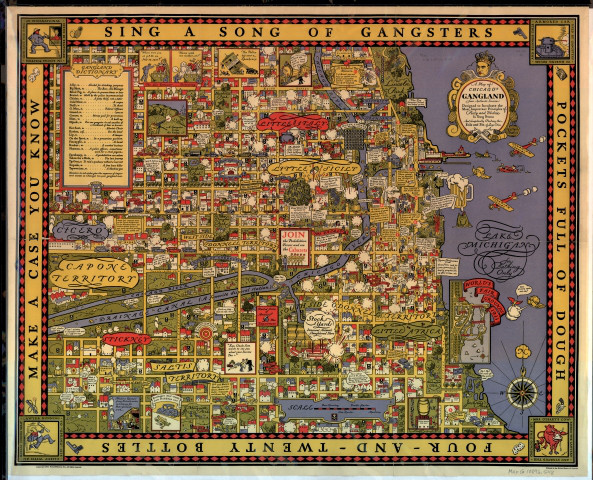 |
| Source: Newberry Library. |



